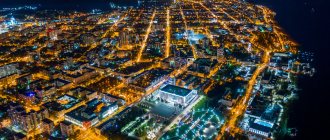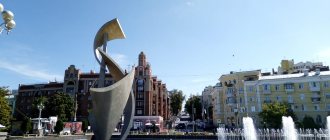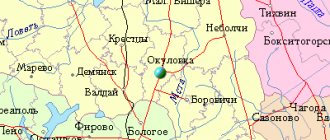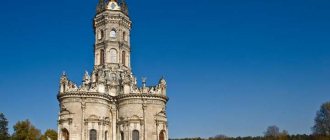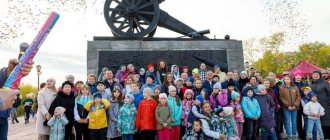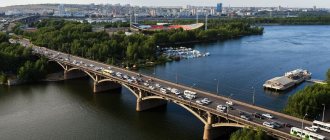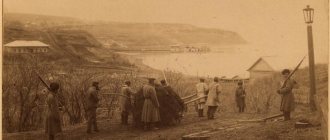When asked what Samara was called before, many will answer “Kuibyshev” and they will be right. However, this name was received by the city during a period when many settlements in the country were renamed in honor of prominent party members and revolutionaries, but its history began much earlier. What name it had before and what role it played in the life of Russia will be discussed in our article.
The first mentions of the Samara River and the city of the same name
The name of the city is directly related to the name of the Samara River, which is a tributary of the Volga. The first mention of it is found in the notes of the secretary of the Arab embassy Ibn Fadlan, who was passing there in May 922. He calls it the Samur River, referring to the name given to it by local nomads. However, the Arab diplomat does not mention any settlements.
About what Samara was called before, that is, before it was officially established on the maps of Russia, researchers have a certain hypothesis, according to which its former name was consonant with the current one. This is evidenced, in particular, by the Venetian map that has come down to us, dating back to 1367, on which a settlement called Samar is indicated in the Middle Volga region.
The settlement of the same name is also shown on another map, compiled in 1459 by the Catholic monk Fra Mauro, who traveled along the Volga. However, there are skeptics who question the legitimacy of identifying ancient Samar with the city that arose on the banks of the Volga in 1586.
First among the first: the founder of Samara, Prince Grigory Osifovich Zasekin
The first governor, the man who founded the city, the first temple in this city and the first fortress around which the city grew. We know very little about our founding father, Prince Grigory Osifovich Zasekin. (This is not a typo. His father, Samara’s grandfather, so to speak, was called by the old Russian name Osif) But what little is known has formed a portrait against the background of the era. Portrait of our main fellow countryman, the first resident of Samara and the founding father of the city. Birth
We know neither the place nor the date of the birth of Prince Gregory. Historians agree that he was most likely born around 1550. That is, he founded Samara when he was approximately 36 years old. And this is now 36 years old - the age of late youth. 430 years ago, the average life expectancy in Rus' was less than 30 years, so the prince founded Samara, being by the standards of that time a very mature husband, almost an old man.
Appearance
We can only guess what Grigory Zasekin looked like. His nickname, received in his youth, is known - “tooth”. It could mean that the owner has good teeth and smiles often, or that he is short in stature, or that he has a quarrelsome character. But since the prince had a brilliant career, and his short stature is never mentioned anywhere, we will assume that he received the nickname for his beautiful smile. Well, and, of course, he was a physically strong and healthy person. Otherwise, I would hardly have lived such a stormy and adventurous life.
Genus
Zasekin is not just a prince. He descends from the Rurikovichs. Among his ancestors are the princes of Yaroslavl. When Yaroslavl lost the battle for the right to become the center of the Russian land, Moscow became the capital. And as power
concentrated in Moscow, the princely family of the Zasekins became smaller and poorer. If Prince Davyd’s great-great-grandfather owned an entire city with the symbolic name Romanov, then his father, Osif Zasekin, owned only 8 villages in the Novgorod lands, and even then they were granted to his ancestors for their service. At the same time, the Novogorod lands, recently annexed to Muscovy, were devastated. Of the 8 villages, people lived in only two. Osif had about a dozen serfs, and among the nobles, despite his princely title, he was a beggar. Therefore, his son, Gregory, could rise to the top in the only way - in the sovereign's service.
Military career
Prince Gregory began serving at the age of 15. We know this for sure from the royal decree that has reached us. We also know about the prince’s military service from very rare reports and documents of the era in which his name is mentioned. Grigory Zasekin served on the western borders of Muscovy, where war constantly flared up and died out. He served in the Korela fortress, which at that time was one of the most powerful and modern fortifications. In general, during the years of service on the northwestern borders, Grigory Zasekin managed to see and serve in many powerful fortresses. And not only Russians. During the Livonian War, Zasekin was for a short time a governor in the Tricaten fortress captured from the Poles.
This experience undoubtedly came in handy on the Volga, where Zasekin himself laid out fortresses.
Unexpected turn
In the mid-70s, changes occurred in the life of Prince Zasekin. Perhaps the impetus was some event unknown to us, although it is quite possible that the reason for Prince Zasekin’s career growth was the cunning of Ivan the Terrible. In 1575, the sovereign unexpectedly announced that he had found a successor for himself, and appointed the Tatar prince Simeon Bikublatovich, who grew up in Muscovy, as tsar. Simeon was considered the Russian Tsar for two years. And although everyone understood the meaning of what was happening, the game went flawlessly. Ivan the Terrible himself turned to the new “tsar” with humiliating requests. According to
Simeon Bikbulatovich received the status of his own court, which included, first of all, nobles who were in vassal dependence on him. And among the vassals of the “king for an hour” there were a lot of Zasekins. They are all listed as persons responsible for one or another item from the royal wardrobe-arsenal. So, Prince Gregory was responsible for the “spear”. It is unknown how all this influenced Zasekin’s career, but, in any case, it is better to be in the retinue of an imaginary ruler than to be in disgrace with the real king..
Messenger of Victory
In 1579, Zasekin, under the command of Voivode Beznin, went on a reconnaissance campaign to the West, beyond the Dvina. Russian troops win their first victories and the “seunch” - a victory report - is brought to Ivan the Terrible, who has already returned to the throne, by Prince Grigory Zasekin. The king gifts him and all other members of the expedition. Zasekin receives a “golden penny”. And apparently he never returns to the West.
Wild field
The prince is sent to the Southeast, to the borders of the “Wild Field” - a huge territory from the Dniester and beyond the Don, to the Volga. This undemarcated desert land has served as an arena for the struggle of nomadic peoples for many centuries. Such a change of situation most likely saves the prince’s life and certainly his career. In the West, the star of Stefan Batory was rapidly rising. Russian troops suffered defeats and lost conquered cities and lands. But Prince Gregory was already in another world. Geopolitical situation
This was a period of formation of Russian statehood, continuous wars and upheavals. 15 years before the founding of Samara, the Crimean Tatars reached Moscow and burned the city, killing over 10 thousand people and taking another 50 thousand into slavery. Davlet-Girey's raid frightened Grozny so much that he promised to return both Kazan and Astrakhn. And there was something to be afraid of - the population of the capital decreased by almost 4 times. The country's statehood and independence were under constant threat. Therefore, the southern border of the country required constant attention and strengthening. Ivan the Terrible conquered the Kazan and Astrakhan principalities, but between them there were 2000 kilometers of the Volga, beyond the control of the Moscow kings. Prince Grigory Zasekin had to correct this situation.
Samara - fortress and city
The founding of Samara and the first steps of city planners are known to us very well, considering that it happened 430 years ago. The origin of the name “Samara” is one of the most mysterious questions. There are a lot of versions. Most of them operate on the fact that the Samar River (Samur) was mentioned long before 1586, the very place where the fortress was built was called the Samara tract, and accordingly, the fortress and the city were named after a hydronym. By the way, in his reports Zasekin writes “Samar” almost everywhere. But, on the other hand, there are the biblical cities of Samaria and Samarra. And the first was the ancient capital of Israel in the 8th century BC, and in the second there is still a tower that was not completed in Babylon and was still completed there. Of course, this may be a coincidence and the name of our city really means something like “summer water,” but let’s not forget that our Samara is the third in world history, and the first two played a significant role in it.
Place
It was chosen in advance for the construction of the fortress. Back in 1585, clerks from the discharge order arrived at the site, and then a project and estimate were prepared in Moscow. However, many sources believe that Prince Zasekin personally chose the place. In any case, when compared with the present time, the area where the fortress was built looked different. The Volga flowed along the current Volozhka, and the modern river bed was dry, and it was more than a kilometer from the Samara fortress to the Volga bank. Therefore, if you want to see our region the way Zasekin saw it, look at the Zhigulevsky Gate. The places where Samarka flows into the Volga have changed beyond recognition.
Fortress
The Samara fortress of 1586 was a fortification of two parallel log walls, which were connected by transverse walls at 6-8 m intervals. Space between walls (up to 3 m)
filled with earth and stones. The total thickness of such a fortress wall was about 5 m. The height of the Samara city wall ranged from 4.5 to 6 m. The Samara fortress had 8 towers, 4 of which were passable and had gates. Fortress towers with hipped roofs, square, quadrangular or polygonal, usually 8-10 m high with single towers about 6 m high or vice versa - up to 15 m. The tower protruded 2-3 m beyond the fortress wall. Inside the tower there were three tiers (“battles”), each of which housed cannons. All towers had oblamas (or oblomas) - an expanded and overhanging upper part, due to which a vertical gap was formed, convenient for firing from above at the besiegers.
Military significance
Prince Grigory Zasekin was much more concerned about the military rather than the historical significance of the new fortress. And if now such a fortress does not look very scary, then in the 16th century, for nomads, towers with cannons and archers with arquebuses were an incredible level of military technology. A fortress like Samara was completely impregnable. The Nogai Murzas, some of whom still remembered the defeat from Russian cannons in the Battle of Molodi, where they fought on the side of Davlet-Girey, demanded that the fortress be demolished, threatening to burn it if they refused. The Russians responded in the sense that the fortress, on the contrary, was built to protect the Nogais from Cossack robbery. Two robber chieftains, or those who were appointed robbers, were executed to appease the Nogais. Prince Grigory Zasekin, who apparently was present at the execution, and before that at the torture of the robbers, was no more cruel than any person of that era. He was simply resolving the issue with the Nogais. And I decided. The Nogais did not besiege Samara until 1615. And even then they were not successful. Just like the Kalmyks, whose ten-thousandth army besieged Samara in 1637. But the fortress built by Prince Zasekin survived, and then troops arrived from Kazan, and the Kalmyks were defeated. But this is another page in the history of Samara. Caucasian trace
Prince Grigory Zasekin left Samara in 1587 forever. His subsequent career was glorious, but short-lived. He helped King Alexander of Georgia in conflicts with the Dagestan Shamkhal Surkhai and died under circumstances unknown to us after 1596.
This was the last prince from an ancient family. Nothing is known about his heirs or his descendants. In the highest sense, in the continuity of spirit, we, the residents of Samara, which he founded, are the heirs of Prince Grigory Zasekin.
A fortress built by the will of the king
It was in this year that the history of Samara began, founded on the banks of the river of the same name, near its confluence with the Volga. The times were extremely turbulent, and in order to protect the region from the constant raids of nomads, as well as to protect the waterway from Kazan to Astrakhan from them, Tsar Fyodor Ioannovich ordered Prince G. O. Zasekin to build a fortress there.
The question of how Samara was formed has been considered by many generations of Russian historians. It was established that by the will of the king, a small fort first appeared, which grew over time and turned into a fortress, which gave rise to a large Volga city. Its foundation and further construction are reflected in detail in the documents that have reached us. They also give the name of the city, which eliminates any doubt about what Samara was called before.
Fight to the bitter end
Today it is easy to talk about what happened in our city until the Decree of the Presidium of the Supreme Soviet of the RSFSR was adopted to rename Kuibyshev to Samara and the Kuibyshev region to Samara. But Alexander Zavalny recalls:
— In the winter of 1987, a meeting was held in the city department of culture. And here’s the last question: “Our department began to receive letters from residents asking us to consider a proposal to return the city to its previous name.” An ironic smile ran across the faces of those present. “How dare they! - burst out from one respectable lady. - What are they aiming for? To the sacred name of Valerian Vladimirovich Kuibyshev for every resident of our city!” And one of the party veterans even tried to engage in hand-to-hand combat with the speaker. The heated Zavalny summed up: two or three years will pass, and you will remember this conversation already in Samara.
All participants in the events speak warmly of the young engineer Anatoly Petrov, who was involved in organizing pickets and collecting signatures for appeals to the Supreme Council. He also helped transport bags of “people's will” to Moscow. Petrov's energetic actions had a great influence at the decisive meeting of the regional council, when a fierce discussion unfolded. According to Kabytov’s recollections, the rector of the state university, Lenar Khramkov, took part in it. But even his call to return the city to its historical name did not have the desired effect. The director of the art museum, the fearless Anetta Bass, took the floor without waiting in line. However, the noise and disorder in the hall continued. And then Anatoly Petrov rose to the podium. He tapped the microphone and said: “Comrades, I think it’s time to return the historical name of Samara to our city. Please vote." These simple words decided the outcome of the matter.
The first inhabitants of the Samara town
According to historians, the Samara fortress, which has not survived to this day, was located in the part of the city where the valve manufacturing plant is located today. Although in those days they had no idea about shock construction, the sovereign’s order was carried out without delay and the fortress was erected surprisingly quickly - in just three months.
The new Samara town, still smelling of fresh resin (as it was called in the old days), was inhabited by service people - archers, gunners and “collars”, that is, those who were supposed to guard the gates from any dashing people. The boyars' children were also exiled here by decree of the tsar to serve their fatherland.
The history of Samara in the 17th century is a chronicle of continuous work to strengthen and expand it. As a result, by 1700 the city consisted of five defensive lines, which included the Kremlin, two prison lines and the same number of lines of gouges, which were soon destroyed due to disrepair. However, this powerful-looking outpost had a very significant drawback - all its structures were wooden, which had the most detrimental effect during the fires that engulfed the city in 1700 and 1703.
Forecast
What population size in Samara is expected in the future and how long the population decline in the region will last is unknown. It can be assumed that actions to improve the area will help, maybe not increase, but at least maintain the current indicators.
Measures taken by the government to increase the population:
- Forms a sustainable trend in the development of economic growth. In 2019, the region entered the top three district leaders in terms of average per capita industrial production, foreign trade turnover and average monthly wages.
- The government actively supports small and medium-sized businesses. First of all, support is aimed at maintaining population size. After all, the regional government is interested in the economic position of the city in the country.
- The country's two flagship universities are located in Samara and Tolyatti. Every academic season, universities attract many visiting students from neighboring communities. After completing their studies, students are offered promising jobs. Many of them remain to live where they studied. Since the number of budget places is growing every year, there is a high probability of increasing the population due to visiting students.
From watchtower to industrial giant
Taught by bitter experience, the Samara people erected a new, this time earthen fortress on the site of the former ashes. During archaeological excavations carried out in 2013-2014, the remains of this structure were discovered in the area of Khlebnaya Square.
In 1851, the Samara province was formed, and from then on the city, which became its capital, received a powerful impetus for its economic and cultural development. At the end of the 19th century, Samara was even called “Russian Chicago” for its rapidly growing industrial production and trade. The city, which in those years numbered fifteen thousand inhabitants, was replete with various enterprises, warehouses and steam mills.
It is interesting to note that it was here that for the first time in Russia the horse tram was replaced by a tram, which left the city depot in 1915. As newspapers of the time noted, it was entirely assembled from domestic parts and materials. Samara is the birthplace of the much-loved Zhigulevsky beer, the production of which began in 1881 at a plant owned by the Austrian entrepreneur Alfred von Vacano. By the way, at first it was called “Vienna”, but then received a more patriotic name.
Sights of Samara
Main attractions of Samara:
- military-historical - Monument of Glory, Stalin's Bunker;
- monuments to Il-2, Soyuz launch vehicle, ZIS-5 car;
- religious - Church of St. George the Victorious, Iversky Convent, Ascension Cathedral;
- architectural - the mansions of Kurlina, Suroshnikov, Subbotina-Martison, Zhogolev, “House with Elephants”, the house of the Old Believers, the Poplavsky house.
And, of course, parks, embankments, squares - there are a lot of interesting things in Samara!
Second capital of the country
The city played an important role in the life of the country during the Great Patriotic War. It essentially served as the second capital of the Soviet Union. The Government and a number of foreign diplomatic missions moved here, to the banks of the Volga.
In case of emergency, the city was ready to become the headquarters of the Supreme Commander-in-Chief I.V. Stalin. A residence was built especially for him, equipped with an underground bunker. Today it is part of the city museum and is open to visitors.
City during the war years
In addition to government offices, the city also housed many enterprises evacuated from the western regions of the country, as a result of which the level of industrial production in it increased fivefold during the war years. To supply the front with combat aircraft, a powerful aviation complex was formed in the city, which established the production of such world-famous aircraft as the Il-2 attack aircraft, as well as the Mig-3 fighters.
The Moscow Bolshoi Theater was also located here and continued to operate. An important event in the cultural life of Kuibyshev during the war was the performance in its hall of the seventh Leningrad Symphony, completed by D. D. Shostakovich, who was evacuated here. The city embankment became a unique monument to the war; granite, once taken from defeated Germany, was used for its cladding.
Current data
36 percent of the population of the entire region lives in the territory of the most populous city. The population of Samara is 1,156,659 people. City assessment for 2021:
- Samara took 8th place in the list of large million-plus cities in Russia.
- The city and its surroundings occupy 11th place in the ranking of densely populated regions of the Russian Federation.
- At the end of 2021, Samara took 6th place in the rating of constituent entities of the Russian Federation in terms of the level of development of labor potential and 13th place in Russia in terms of investment potential.
- Samara is a highly urbanized region - 79.8% of citizens of the total population live in urban areas.
- The share of the province's foreign trade turnover in the foreign trade of the Volga Federal District was 12.9%.
- Samara's trading partners are 134 foreign countries.
- There are 700 large and medium-sized industrial enterprises operating on the territory. Based on the results of work in 2021 and the beginning of 2021, Samara took 4th place in the Volga Federal District in terms of the volume of shipped industrial goods.
The flag of Samara, which has become a symbol of new times
Throughout the entire period of communist rule, right up to the start of perestroika, party ideologists made every effort to destroy among the people the memory of what Samara was called before. The same trend was observed in other renamed cities in the country.
However, already in 1990, at the very beginning of the democratic transformations that swept the country, the city was returned to its historical name, and eight years later, by decision of the City Duma, the flag of Samara was approved. It would not be an exaggeration to say that for the townspeople it became not only the official symbol of the municipality, but also the visible embodiment of the changes brought by perestroika to the life of every citizen of Russia.
Fell asleep in Kuibyshev, woke up in Samara
And yet, deep down in his soul, Titov himself was not an opponent of innovation. During his student years, he often went to sports competitions in other cities and there he heard that everyone called our fellow countrymen Samarans. The decisive role, according to Titov, was played by the support of the Kuibyshev Regional Executive Committee, which was headed by Viktor Tarkhov. In the end, it was possible to achieve that both the city and the region were renamed at the same time. The residents of Yekaterinburg, for example, did not succeed. According to the first deputy head of Samara, Vladimir Vasilenko, it was at that moment that he was on a business trip in the capital of the Urals. I arrived in Sverdlovsk, and was already leaving Yekaterinburg. At that time, Vladimir Vasilenko was a deputy of the Kuibyshev City Council. According to him, residents of the regional capital split into two camps, between which there was a serious struggle. And although two-thirds of people in everyday life called themselves Samara residents, many understood that old Samara could not have achieved such a level of development if it had not become a reserve capital in Soviet times under Kuibyshev. The discussion in the City Council was very heated, as it included many representatives of industry, the aviation and space industries. And yet, out of 214 people, 114 deputies voted “for”. Vasilenko believes that this can be called a victory for true democracy. And subsequently, not a single one of his voters, who fell asleep in Kuibyshev and woke up in Samara, reproached him for supporting the initiative of local historians.
